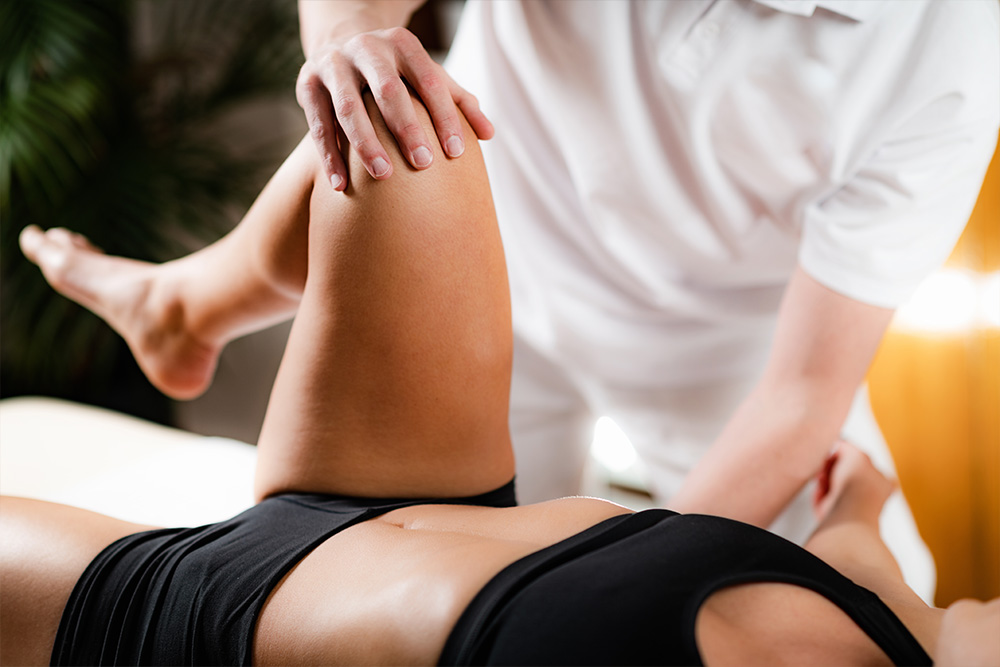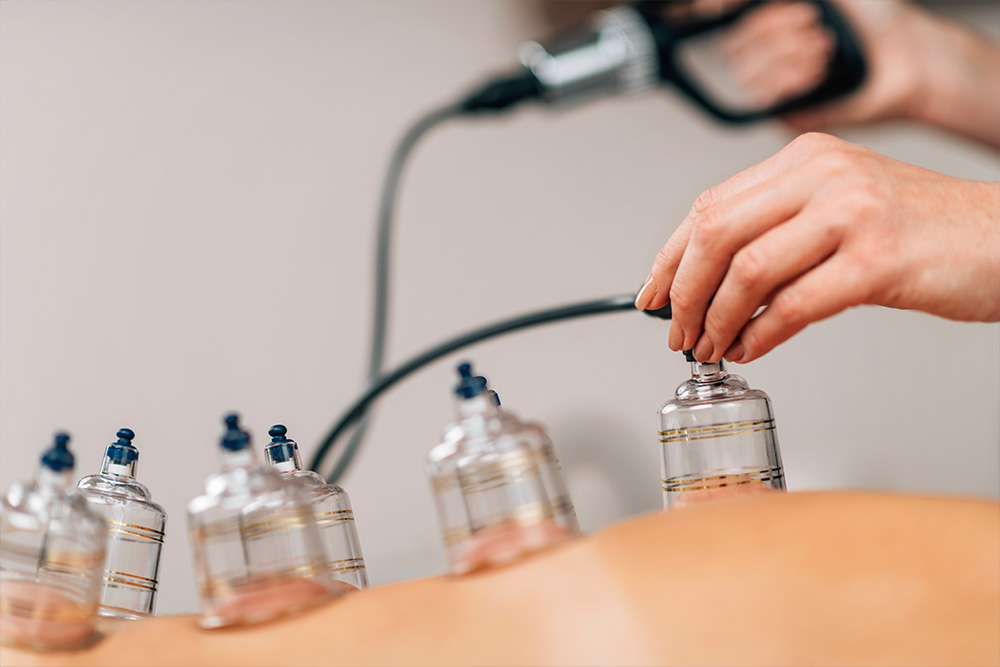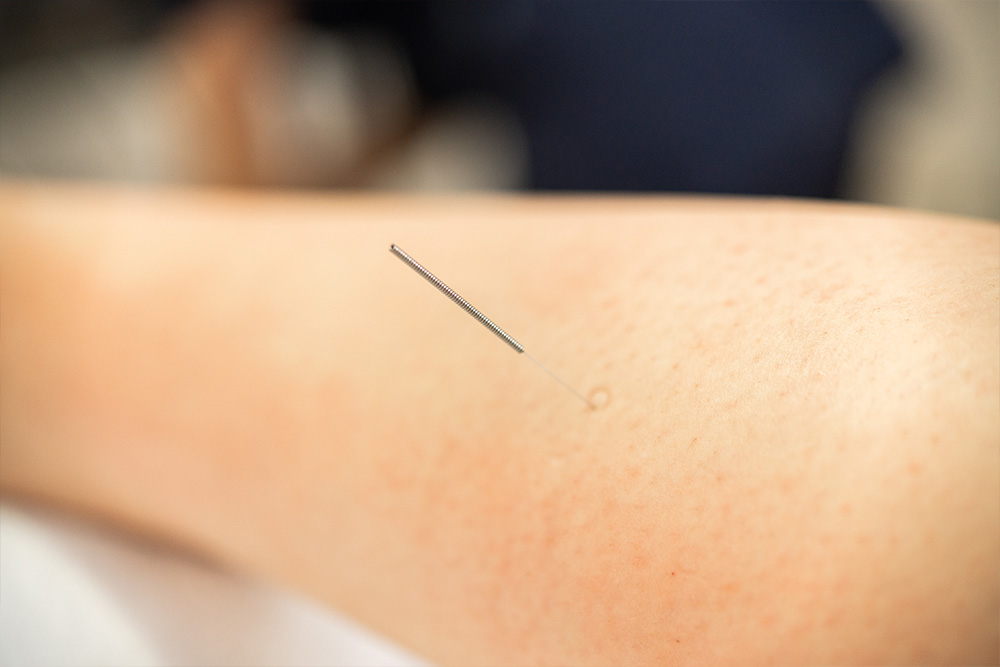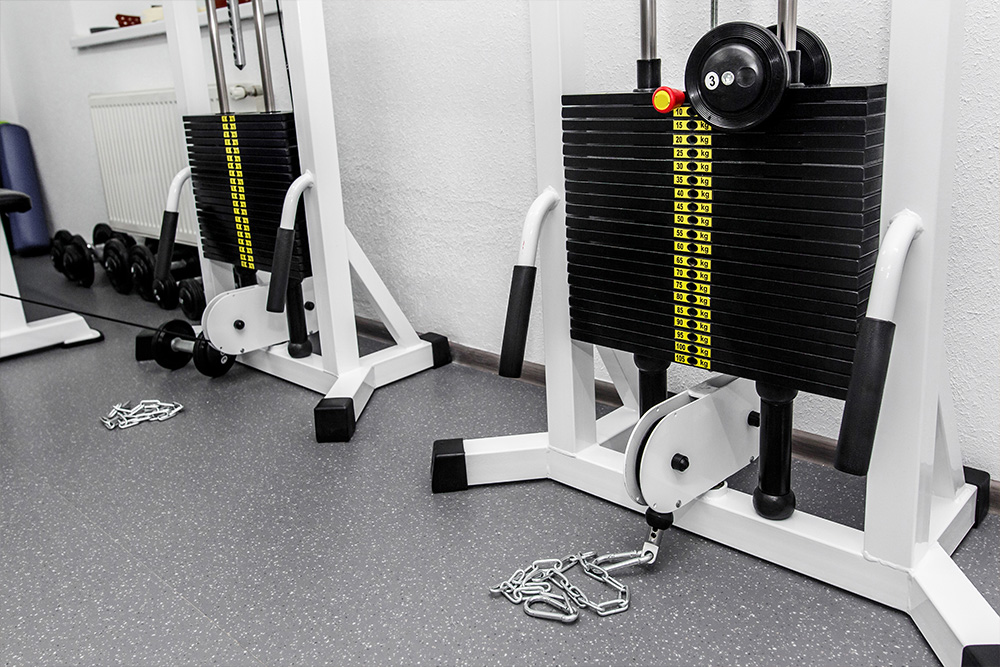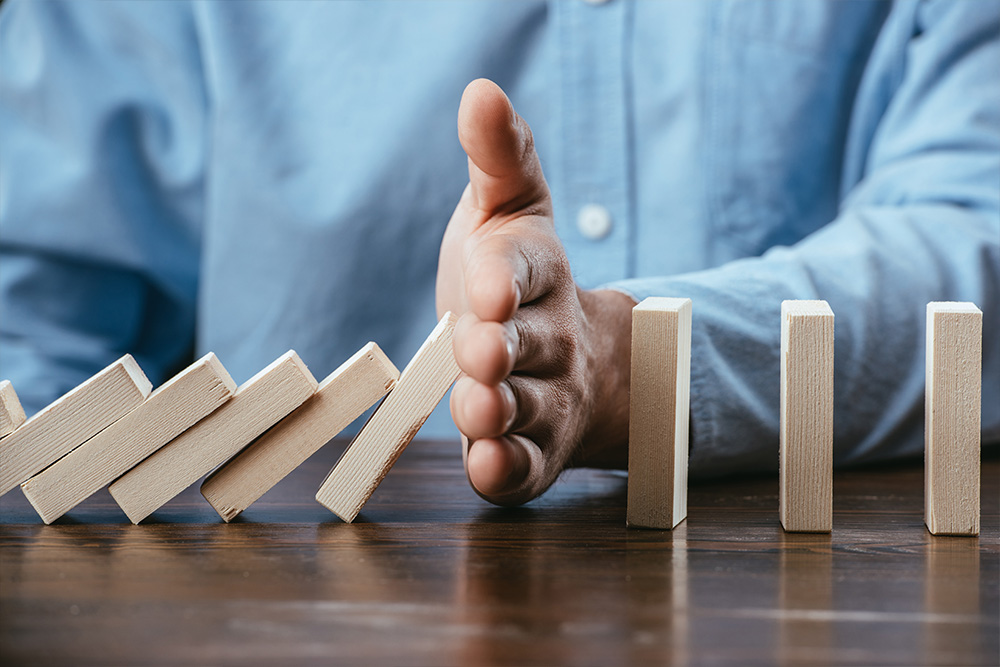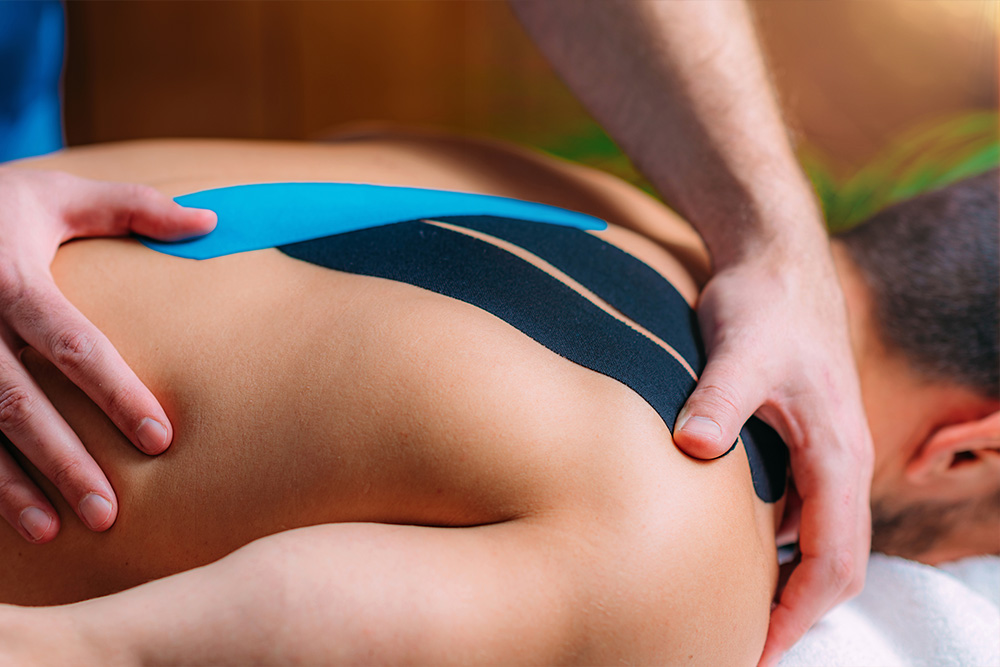Westernport osteopathy
Osteopathic treatments
Osteopathic Manual Therapy (OMT)
Osteopathic Manual Therapy, or as it is sometimes known, Osteopathic Manipulative Treatment (OMT) is the true heart of osteopathic treatment, and consists of your university-educated osteopath applying their extensive knowledge and experience to your complaint or concern by using their hands and arms to identify and treat.
OMT refers to the physical manipulation of your musculo-skeletal system. Don’t let the word “manipulate” fool you – this simply means movements such as massage, palpating the area or applying pressure with their hands.
Common examples of OMT during your treatment might include
– Placing our hands on a muscle to identify areas or tension, strain or trigger points.
– Placing pressure in a particular spot in order to allow the muscle to release.
– Broad, longer strokes with the elbow or hands in a massage-like pattern
Like all parts of your treatment at Westernport Osteopathy, OMT is utilised after an in-depth conversation with your osteopath, ensuring you are comfortable and understand each aspect of your treatment. A range of other osteopathic mediums such as cupping, dry needling and kinesiology taping are also considered and may be included in your treatment.
Osteopathic Manual Therapy on the Mornington Peninsula
Ready to experience OMT for yourself? Click here to book your appointment, or learn more about our practitioners here.
Cupping
Cupping, Maybe you’ve heard of it before but you’re not quite sure what it entails. This unique and ancient practice is around 3,000 years old and utilised across Egypt, Greece, China and Europe, and is an integral part of Traditional Chinese Medicine.
How does cupping therapy work?
Cupping involves small glass or plastic cups being placed upon the skin and creating a vacuum, drawing the skin up into the cup. Traditionally this was done by lighting a small piece of cotton at the dome of the cup to use heat, however many modern practitioners including ourselves utilise a manual pump to achieve this effect, giving a higher level of control and accuracy.
So why is it so popular with sports stars and regular osteo clients alike?
Cupping has a range of benefits include
– Assisting in increasing circulation by bringing blood to the surface of the skin
– Loosening and relaxing tight, painful muscles
– Helping to move lymph fluid through the body, assisting in immune function
Your osteopath may use cupping therapy alongside a range of other treatments, such as Osteopathy Manual Therapy, Dry Needling and Kinesiology tape.
Cupping therapy on the Mornington Peninsula
Interested in learning more about cupping as part of your osteopathic treatment? Learn more on our blog, or book your appointment with one of our practitioners to learn more.
Dry Needling
With a long history of treatment and multiple generations of development, dry needling is a widely practiced treatment by a range of specialists, including osteopaths. Dry needling involves the use of an incredibly fine filament needle into the muscle at a trigger point to stimulate a response. Our experienced practitioners will provide a comfortable, clean and welcoming environment to put your mind and body at ease. As the needle is incredibly fine, this response is a twitch response made by the body that causes a very small change in the muscular fiber, encouraging the body’s healing process while aiming to relieve muscular pain and stiffness.
Other benefits can include
– Improved sleep and recovery
– Decreased muscular tension
– Increasing your range of motion
– Reduction in headaches
– Assisting a range of common complaints and injuries including frozen shoulder, tennis
elbow, neck stiffness and many more.
When is dry needling used in osteopathy?
Dry needling can be utilised alongside other manual therapies on an as-needed basis. Your osteopath is trained to identify those areas that would benefit from dry needling, especially those where touch may be incredibly painful or sensitive. Dry needling offers the chance to work deeply on the affected area without causing more discomfort, especially in hard to help areas.
Dry Needling on the Mornington Peninsula
Interested in learning more about dry needling as part of your osteopathic treatment? Chat to our Osteopath, Karl about the benefits of dry needling and how he may incorporate it in your appointment.
Rehabilitation
When you’re injured and seeking rehabilitation, it might seem like the only part of you that requires focus is that single issue – but by looking at the body as a whole, as we do in osteopathy, we can focus on healing and recovery that ensures the whole body is ready to get back in action.
Combining a range of osteopathic treatments such as manual therapy, kinesiology taping and dry needling, your rehabilitation doesn’t stop once you leave the clinic. We’ll work with you to create a system that works with your lifestyle, motivation and resources to ensure you can continue to strengthen and recover at home.
Why osteopathy for rehabilitation?
– Whole body focus While we’ll work together to improve your injury or focus area, Osteopathy is about looking at the body as a whole. As you recover from an injury or issue it’s not uncommon for other parts of the body to ‘pick up the slack’. By ensuring the whole body remains in sync, we can prevent further misalignments and focus on returning you to the best condition possible.
– Lifestyle focused Your recovery and rehabilitation success hinges on your ability to engage in the program at home as well as in the clinic. By understanding your preferences and lifestyle, we can create a program that works with you, increasing your likelihood of success.
– Getting you there, and keeping you there Long after your rehab days are over, regular check-ins with your dedicated osteopath can mean preventing further injuries, and staying on the right path.
Rehabilitation with Westernport Osteopathy
We use a range of different devices and equipment to ensure correct testing and examinations so we can provide individualized exercise prescriptions. Some of the many types of equipment on site include
– Iron kettlebells ranging from 4-20kg
– Therabands ranging in difficulty and size
– Ankle range of motion mats
– Mobility poles
– Medicine balls
– Goniometer (measures your range of movement from a specific joint)
Rehabilitation on the Mornington Peninsula
Our Somerville clinic welcomes new rehabilitation clients to experience a more thorough approach to wellness and recovery. Learn more by booking an initial appointment with Karl Godden.
Falls Prevention
Fall prevention is important for a wide range of Australians, especially those with mobility challenges or are getting older. As our bodies change over time, or due to unexpected injuries or disease, our needs change as well. Osteopathy aims to assist all bodies in remaining balanced and strong with emphasis on overall wellbeing. For seniors, this is especially important to remain active, independent and healthy.
You may be a fall risk due to a large range of factors, including
– Slowing down and doing less activity due to age or lifestyle change
– Joint stiffness and discomfort, which may make balance worse
– Neurological changes which may make balance and muscular control more challenging
One of the primary values of osteopathy is to view the body as interconnected systems, and see your health management is much the same. As a result, we proudly work alongside GPs, specialists and other allied health professionals to assist in helping alleviate symptoms and conditions that may increase your fall risk.
How can osteopathy help to prevent falls?
By empowering you with specific treatments, as well as home care advice and planning, osteopathy can assist you in preventing falls by focusing on strengthening the body and alleviating pain which may make you move in ways that cause imbalances.
Osteopathy to prevent falls on the Mornington Peninsula
An intensive dive into your health history and current challenges is the perfect way to begin your journey to more strength and balance. Book your appointment with one of our practitioners to learn more here.
Kinesiology Taping
Have you ever watched a game of footy, netball or something similar and noticed tape in a whole range of colours across athlete’s limbs and torsos? That’s often kinesiology tape at work, helping these athletes perform their best by providing support, assisting with swelling and helping to improve their performance.
Kinesiology taping was developed in the 1970s, by a Japanese chiropractor seeking to support his patient’s needs with taping, but in a way that didn’t limit movement the way that many traditional athletic tapes are prone to. Made of cotton and nylon, the tape is similar to the elasticity of human skin, allowing you to perform a full range of motion while remaining supported.
How does kinesiology taping work?
When kinesiology tape is applied to the body, it has a gentle recoil to it which gently lifts the skin. This creates a very fine amount of space between the skin and the tissues found beneath
- This space can reduce the chance of joint irritation and swelling. By creating space below the skin, it is believed that the pressure gradient in this area is also changed. This allows fluid to flow better, helping with swelling and circulation.
This change is also believed to change how your sensory nervous system interprets pain, decompressing areas with gentle lift which may then reduce the sensation of pain. When this is lifted, tense trigger points may then respond differently, and tension decreases.
Kinesiology taping is a therapeutic technique used to support muscles and joints without restricting movement. It involves applying a special elastic tape to the skin, which mimics the elasticity of human skin and allows for full range of motion while offering support.
What is Kinesiology Taping?
Kinesiology taping, commonly known as KT taping, was developed in the 1970s by Dr. Kenzo Kase, a Japanese chiropractor. It is designed to alleviate pain, reduce swelling, and enhance the body’s natural healing processes. Unlike traditional athletic tape, kinesiology tape is stretchy and can be worn for several days, providing ongoing support and relief.
How Does Kinesiology Taping Work?
The tape works by lifting the skin slightly, which creates a space between the skin and underlying tissues. This lifting action improves blood flow and lymphatic drainage, which helps to reduce inflammation, bruising, and swelling. It also provides sensory feedback to the brain, which can help to reduce pain and discomfort by modulating the body’s pain signals.
Benefits of Kinesiology Taping
- Pain Relief The tape can provide pain relief by reducing pressure on pain receptors in the skin, muscles, and joints.
- Reduced Swelling and Inflammation By promoting better circulation, kinesiology tape helps with fluid movement and drainage, reducing swelling.
- Support for Injured Muscles and Joints The tape supports muscles and joints without limiting motion, allowing for more functional rehabilitation.
- Improved Performance For athletes, kinesiology taping can help enhance performance by providing support during activity and preventing further injury.
- Faster Recovery By improving blood flow and reducing swelling, kinesiology taping can speed up the recovery process from injuries.
Who can benefit from kinesiology taping?
You don’t need to be a professional athlete to benefit from taping. As the treatment focuses on supporting weak areas and treating injuries, this is a common option for any osteopathy patient seeking a form of gentle help that lasts. Kinesiology taping can also be utilised during pregnancy to assist in the common aches and pains experienced during this time.
Read more about some common osteopathic issues

Have you fallen off a cliff?
Back pain blog By Karl Godden I recently had my own episode of acute back pain. It started fairly innocently – In fact, I was


Osteopathy for Everyone: How Your Job Impacts Your Body and How We Can Help
Osteopaths treat people from all walks of life, each bringing their own unique challenges and stressors that affect their physical health. Whether you work in

Empowering Women Through Pregnancy with Osteopathy
Pregnancy is an incredible journey—one filled with joy, change, and sometimes, unexpected physical challenges. As an osteopath and a mum to a busy toddler, I

Healing with Sound & Touch: How Therapeutic Ultrasound Supports Hands-On Osteopathy
At our osteopathic clinic, we believe in a whole-body approach to healing—one that combines manual therapy with modern techniques to support your body’s natural ability

